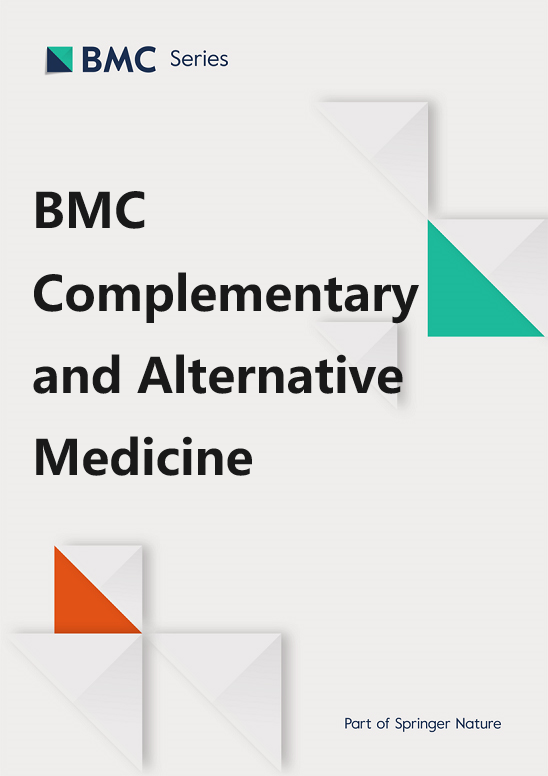探索 SH003 治疗非小细胞肺癌多分子机制的网络药理学研究
IF 3.4
2区 医学
Q1 Medicine
引用次数: 0
摘要
非小细胞肺癌(NSCLC)是导致全球人类死亡的主要原因之一。中药处方 SH003 已被开发用于治疗包括 NSCLC 在内的多种癌症。由于SH003具有多靶点和多途径的多组分性质,因此我们开展了一项网络药理学研究,以分析其治疗NSCLC的活性化合物、潜在靶点和途径。我们采用基于 ADME 标准的筛选方法,从 TM-MC、OASIS 和 TCMSP 数据库中系统地鉴定了 SH003 中的口服活性化合物。同时,我们还从各种数据库中合并了 SH003 相关靶点和 NSCLC 相关靶点。重叠的靶点被视为 SH003 的抗 NSCLC 实体。利用 STRING 数据库构建了蛋白质-蛋白质相互作用网络,通过节点中心度量确定了关键蛋白质。通过对活性化合物的 LC-MS 分析进行了经验验证。此外,还进行了 MTT 细胞活力测定和 Western 印迹分析等体外实验,以证实网络药理学的发现。我们在 SH003 中发现了 20 种口服活性化合物,并确定了 239 个 SH003 与 NSCLC 相关基因共享的核心靶点。网络分析发现了 79 个对 NSCLC 治疗至关重要的枢纽基因,包括 TP53、JUN、AKT1、STAT3 和 MAPK3。GO和KEGG分析从遗传学角度强调了SH003抗NSCLC的多方面作用。实验验证了 SH003 对 NSCLC 细胞活力的影响以及对枢纽基因的下调。LC-MS分析证实,在SH003的草药-化合物-靶点网络中,中位数大于10度的8种化合物中存在4种活性化合物,即Hispidulin、luteolin、baicalein和chrysoeriol。在现有 NSCLC 文献的支持下,CASP9、MAPK9 和 MCL1 等以前未发现的靶点也被揭示出来,从而增强了经验验证在网络药理学中的关键作用。我们的研究开创性地将理论预测与实际验证统一起来。经验验证揭示了 NSCLC 中特定的 SH003 化合物,同时发现了治疗 NSCLC 的新靶点。这种以经验验证为重点的综合策略为中草药的深入探索建立了一个范例。此外,我们的网络药理学研究还揭示了 SH003 抗击 NSCLC 的多方面分子机制。通过这种方法,我们确定了 SH003 的活性化合物和靶点通路,重塑了我们对 SH003 治疗 NSCLC 的机制的认识。本文章由计算机程序翻译,如有差异,请以英文原文为准。
Network pharmacology study to explore the multiple molecular mechanism of SH003 in the treatment of non-small cell lung cancer
Non-small cell lung cancer (NSCLC) is one of the leading causes of human death worldwide. Herbal prescription SH003 has been developed to treat several cancers including NSCLC. Due to the multi-component nature of SH003 with multiple targets and pathways, a network pharmacology study was conducted to analyze its active compounds, potential targets, and pathways for the treatment of NSCLC. We systematically identified oral active compounds within SH003, employing ADME criteria-based screening from TM-MC, OASIS, and TCMSP databases. Concurrently, SH003-related and NSCLC-associated targets were amalgamated from various databases. Overlapping targets were deemed anti-NSCLC entities of SH003. Protein–protein interaction networks were constructed using the STRING database, allowing the identification of pivotal proteins through node centrality measures. Empirical validation was pursued through LC–MS analysis of active compounds. Additionally, in vitro experiments, such as MTT cell viability assays and western blot analyses, were conducted to corroborate network pharmacology findings. We discerned 20 oral active compounds within SH003 and identified 239 core targets shared between SH003 and NSCLC-related genes. Network analyses spotlighted 79 hub genes, including TP53, JUN, AKT1, STAT3, and MAPK3, crucial in NSCLC treatment. GO and KEGG analyses underscored SH003’s multifaceted anti-NSCLC effects from a genetic perspective. Experimental validations verified SH003’s impact on NSCLC cell viability and the downregulation of hub genes. LC–MS analysis confirmed the presence of four active compounds, namely hispidulin, luteolin, baicalein, and chrysoeriol, among the eight compounds with a median of > 10 degrees in the herb-compounds-targets network in SH003. Previously unidentified targets like CASP9, MAPK9, and MCL1 were unveiled, supported by existing NSCLC literature, enhancing the pivotal role of empirical validation in network pharmacology. Our study pioneers the harmonization of theoretical predictions with practical validations. Empirical validation illuminates specific SH003 compounds within NSCLC, simultaneously uncovering novel targets for NSCLC treatment. This integrated strategy, accentuating empirical validation, establishes a paradigm for in-depth herbal medicine exploration. Furthermore, our network pharmacology study unveils fresh insights into SH003’s multifaceted molecular mechanisms combating NSCLC. Through this approach, we delineate active compounds of SH003 and target pathways, reshaping our understanding of its therapeutic mechanisms in NSCLC treatment.
求助全文
通过发布文献求助,成功后即可免费获取论文全文。
去求助
来源期刊

BMC Complementary and Alternative Medicine
INTEGRATIVE & COMPLEMENTARY MEDICINE-
CiteScore
7.00
自引率
0.00%
发文量
0
审稿时长
3 months
期刊介绍:
BMC Complementary Medicine and Therapies is an open access journal publishing original peer-reviewed research articles on interventions and resources that complement or replace conventional therapies, with a specific emphasis on research that explores the biological mechanisms of action, as well as their efficacy, safety, costs, patterns of use and/or implementation.
 求助内容:
求助内容: 应助结果提醒方式:
应助结果提醒方式:


